Artist Phidias | ||
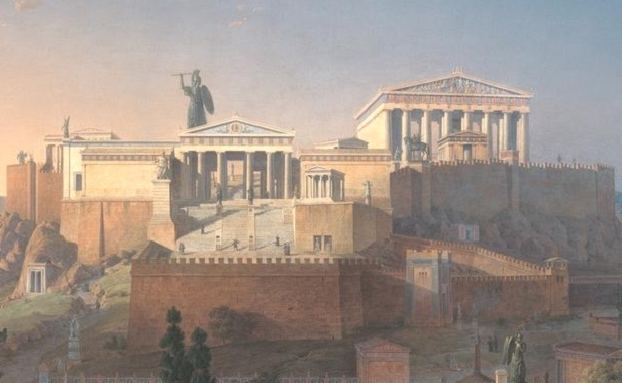 | ||
Similar Athena Parthenos, Temple of Athena Nike, Old Temple of Athena, Propylaea, Erechtheion | ||
athena promachos
The Athena Promachos (Ἀθηνᾶ Πρόμαχος "Athena who fights in the front line") was a colossal bronze statue of Athena sculpted by Pheidias, which stood between the Propylaea and the Parthenon on the Acropolis of Athens. Athena was the tutelary deity of Athens and the goddess of wisdom and warriors. Pheidias also sculpted two other figures of Athena on the Acropolis, the huge gold and ivory ("chryselephantine") cult image of Athena Parthenos in the Parthenon and the Lemnian Athena.
Contents
The designation Athena Promachos is not attested before a dedicatory inscription of the early fourth century CE; Pausanias (1.28.2) referred to it as "the great bronze Athena" on the Acropolis.
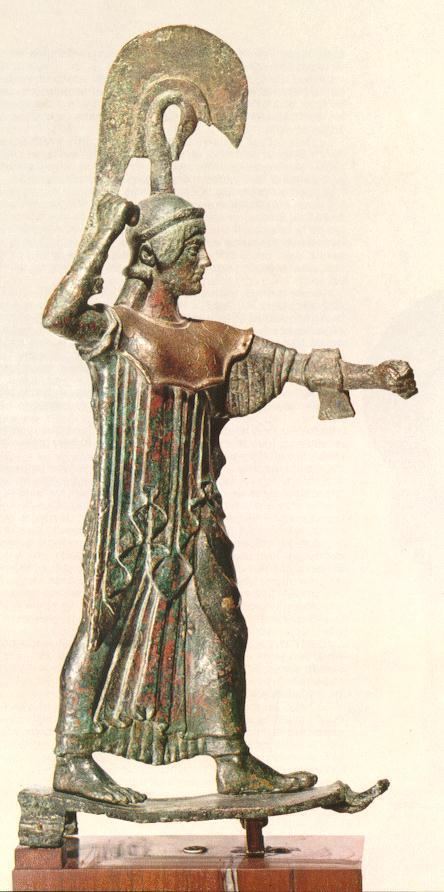
Athena promachos
History

The Athena Promachos was one of the earliest recorded works by Pheidias. It was erected during the Classical period of Ancient Greek culture, approximately 456 BCE. It was made with the Persian spoils of the Battle of Marathon, won some years earlier. Parts of the marble base remain; according to the preserved inscription, it measured about 10 m (30 ft) high. It showed Athena standing with a spear alongside, her shield resting upright against her leg, and her right arm extended, bearing a winged figure in that hand. The statue was so large it is said that the tip of the spear and her helmet crest were visible at sea, off Cape Sounion.
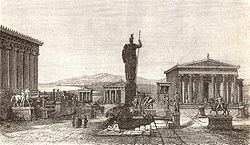
Surviving accounts for the creation process for the sculpture cover nine years, but the dates are not identifiable, because the names of officials are missing. The sculpture may have commemorated Kimon's defeat of the Persians at the Eurymedon in 467 or the peace of Kallias in approximately 450 or 449.

The appearance of the Athena Promachos may be identified certainly only on a few Attic coins minted during Roman times, in the first and second centuries CE, providing clues to identifying versions in surviving sculptures, with varying confidence. They show that she wore a belted garment and stretched forward her right hand on which a winged figure may be seen. A spear leans against one shoulder and her shield, which we know was made separately by different artists, rests on the ground. Sometimes the plinth is indicated. Sometimes her crested helmet is rendered as Attic in type, sometimes Corinthian.
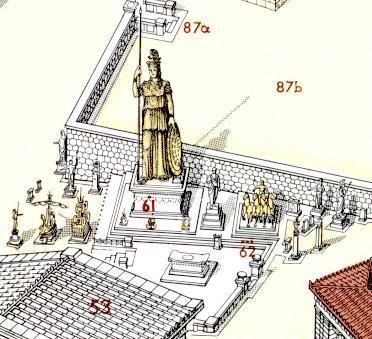
Athena Promachos stood overlooking her city for approximately 1000 years, until shortly after 465 CE, when the sculpture was transported to Constantinople (capital of the Eastern Roman Empire) as a trophy in the "Oval Forum", which became the last bastion and safe haven for many surviving Greek bronze sculptures under the protection of the Eastern Empire's Imperial court.
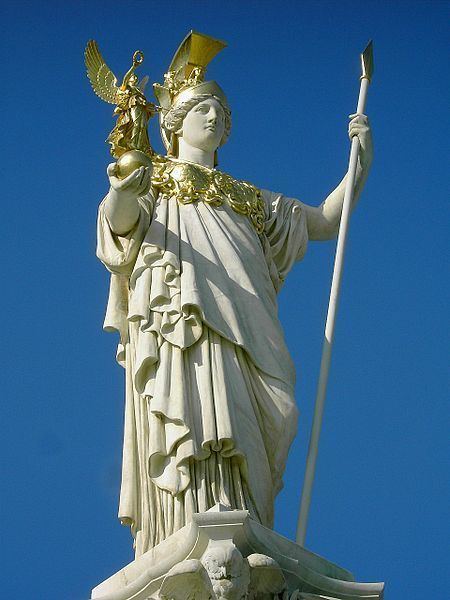
The Athena Promachos was destroyed in 1203 by a superstitious mob who thought she was beckoning the crusaders who had besieged the city.
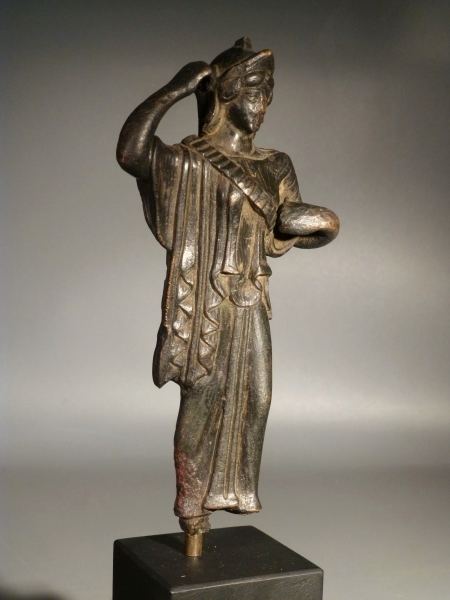
Of surviving models thought to represent the type, the two outstanding ones are the Athena Elgin, a small bronze statuette in the Metropolitan Museum of Art, who bears an owl in her outstretched hand (as among some coin types), and the Athena Medici torso in the Musée du Louvre, of which there are a number of replicas.
